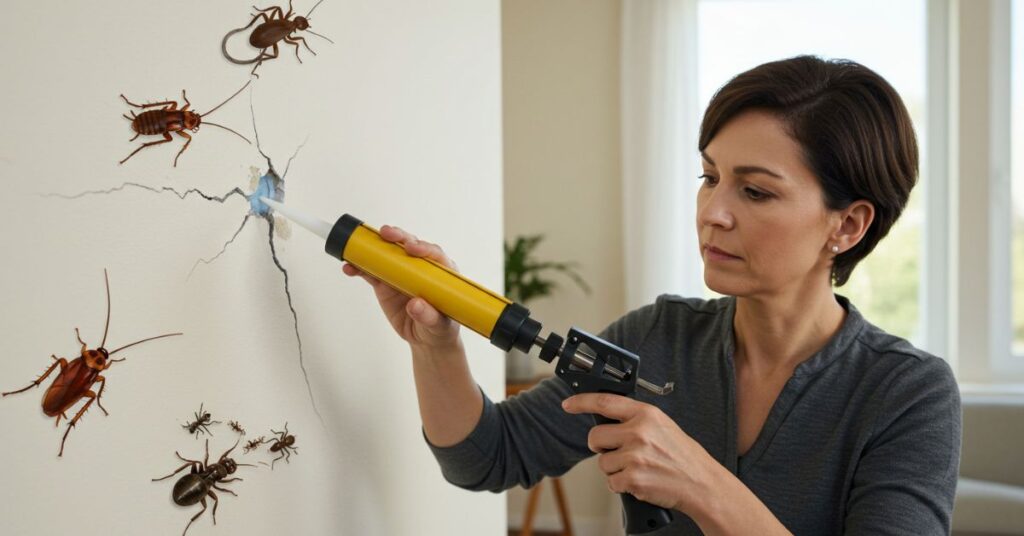Introduction
Pest infestations can be a nightmare for homeowners and business owners alike. Whether it’s rodents, insects, or other unwelcome guests, these intruders can cause significant damage to property, spread diseases, and create an unsanitary living or working environment.
Understanding why pest infestations occur and how to prevent them is crucial to maintaining a clean and healthy space.
In this article, we’ll explore the causes of pest infestations, common types of pests, and effective prevention and control measures.
Common Causes of Pest Infestation
- Availability of Food and Water Pests are constantly on the lookout for food and water sources. Crumbs, spills, and improperly stored food can attract ants, cockroaches, and rodents. Leaky pipes, standing water, and damp areas provide an ideal environment for pests to thrive.
- Poor Sanitation Unsanitary conditions are one of the leading causes of pest infestations. Accumulated garbage, unclean kitchen spaces, and clutter create hiding spots and breeding grounds for pests.
- Structural Gaps and Openings Pests can enter buildings through cracks, holes, and gaps in doors and windows. Rodents, for instance, can squeeze through tiny openings, while insects can enter through unsealed vents and gaps in walls.
- Clutter and Storage Issues Piles of newspapers, cardboard boxes, and other clutter provide excellent hiding places for pests. Cockroaches and rodents, in particular, thrive in such environments where they can nest and multiply.
- Seasonal Changes Certain pests invade homes based on seasonal changes. For example, rodents seek warmth indoors during winter, while mosquitoes become more active in warmer months.
- Outdoor Attractants Overgrown gardens, stagnant water, and unkempt lawns can serve as breeding grounds for pests. Trash bins left uncovered and pet food left outside can also attract pests to your property.
Common Types of Pests and Their Risks
- Rodents (Rats and Mice)
- Damage electrical wiring, furniture, and insulation
- Contaminate food sources
- Spread diseases such as leptospirosis and hantavirus
- Cockroaches
- Thrive in warm, damp areas
- Carry bacteria that can cause food poisoning
- Trigger allergies and asthma
- Termites
- Feed on wood, causing structural damage
- Go undetected for long periods
- Require professional extermination
- Bed Bugs
- Hide in mattresses, furniture, and carpets
- Cause itchy bites and allergic reactions
- Difficult to eliminate without professional help
- Ants
- Invade kitchens and pantries
- Form large colonies
- Some species, like carpenter ants, can damage wood structures
- Mosquitoes
- Breed in stagnant water
- Transmit diseases such as malaria, dengue fever, and Zika virus
- Active in warm and humid conditions
Effective Pest Prevention Methods
- Maintain Cleanliness
- Regularly clean kitchens, dining areas, and food storage spaces.
- Dispose of garbage properly and keep trash bins sealed.
- Vacuum carpets and upholstery frequently.
- Seal Entry Points
- Inspect doors, windows, and walls for cracks and seal them.
- Use weather stripping on doors and windows.
- Install mesh screens on vents and chimneys.
- Proper Food Storage
- Store food in airtight containers.
- Avoid leaving food out overnight.
- Clean up spills immediately.
- Eliminate Moisture Sources
- Fix leaky pipes and faucets.
- Ensure proper ventilation in damp areas.
- Remove stagnant water from trays, flower pots, and drains.
- Declutter and Organize
- Keep storage areas tidy and free from unnecessary items.
- Store firewood away from your home.
- Trim overgrown vegetation near buildings.
- Use Natural and Chemical Pest Control Methods
- Use essential oils like peppermint and eucalyptus to repel insects.
- Employ traps for rodents and insects.
- Consider professional pest control services for severe infestations.
When to Call a Professional Pest Control Service
If a pest infestation persists despite preventive measures, it may be time to call professional pest control services. Here are signs that indicate professional intervention is necessary:
- Frequent sightings of pests despite DIY control efforts.
- Structural damage caused by termites or rodents.
- Persistent pest-related health issues, such as allergies or bites.
- Presence of nests or colonies in or around your home.
Conclusion
Pest infestations occur due to factors such as poor sanitation, food availability, structural vulnerabilities, and seasonal changes.
By implementing proactive measures like maintaining cleanliness, sealing entry points, and eliminating moisture sources, you can prevent pests from invading your home.
However, for severe infestations, seeking professional pest control services is the best course of action. A well-maintained environment is key to keeping pests at bay and ensuring a safe, healthy living space.



